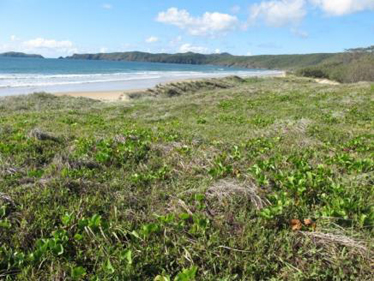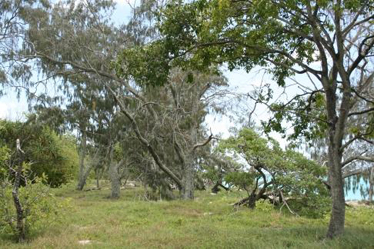Foredune vegetation


Habitat type: Foredune vegetation
Other key words: open shrublands, closed shrublands, grasslands, woodlands, open forests, strand, herbland, dunes, swales.
Description: This vegetation type occurs on foredunes and beach ridges (1) The sparse herbland frequently contains beach spiniex (Spinifex sericeus), tropical beachgrass (Thuarea involute), sand couch (Sporobolus virginicus), stalky grass (Lepturus repens), Euphorbia tannensis subsp. tannensis, bull’s head vine (Tribulus cistoides), coastal jack bean (Canavalia rosea), Salsola australis and sea purslane (Sesuvium portulacastrum). (2) Coastal she-oak (Casuarina equisetifolia subsp. Incana) generally dominates the sparse canopy. Swamp she-oak (C. glauca) may dominate in some areas of SEQ bioregion. Shrubs are generally very sparse and the ground layer is sparse to mid-dense. (3) Corymbia bella or beefwood (Grevillea striata) or yellow hakea (Hakea arborescens) or broad-leaved tea-tree (Melaleuca viridiflora) may occur in a sparse low woodland in GUP bioregion. The ground layer is sparse.


